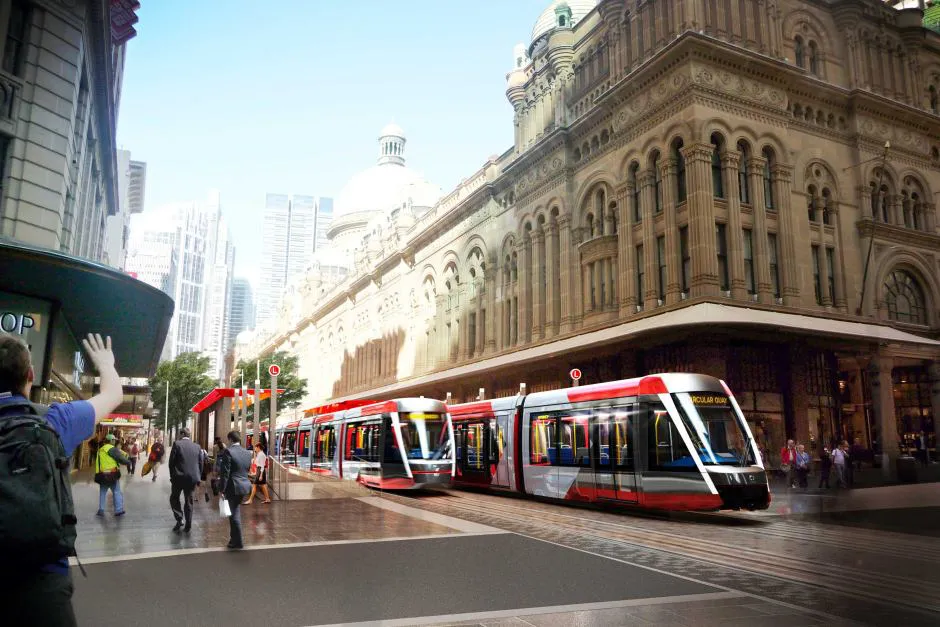
Thankfully, from July 1, catching public transport will be slightly less of a headache with the NSW Government today, Tuesday, June 16, announcing that the network will almost double its current capacity from this date. Which means 23 commuters will be allowed on a bus (up from 12), 68 on a Waratah carriage (up from 32), 450 on Freshwater ferries (up from 245), 40 on a light rail carriage and 65 on Metro carriages.
Under current social distancing guidelines, Sydney's public transport network is running at just a quarter of its usual capacity. But with more and more Sydneysiders heading back to work, more and more people are catching buses, trains and ferries — and, if you've tried to catch one of late, you may've noticed lines and wait times are getting longer.
Thankfully, from July 1, catching public transport will be slightly less of a headache with the NSW Government today, Tuesday, June 16, announcing that the network will almost double its current capacity from this date. Which means 23 commuters will be allowed on a bus (up from 12), 68 on a Waratah carriage (up from 32), 450 on Freshwater ferries (up from 245), 40 on a light rail carriage and 65 on Metro carriages.
While this is a significant step up from current limits, it's still less than 50 percent of the network's usual capacity — so, the NSW Government is continuing to encourage Sydneysiders to avoid travelling during peak times and to walk or ride their bike where possible. To help with the latter, Transport for NSW and the City of Sydney are constructing six new temporary bike paths, which are set to be completed by June 30 this year.
If you do decide to catch public transport, real-time apps — including TripView, TripGo, Google Maps and the Opal App — now show the safe capacity for each service and 450,000 green dot decals have been rolled out across the network, which signify the safe, socially distant spots to sit and stand.
As the public transport numbers continue to increase, the government is continuing to clean carriages three-to-four times a day and is telling commuters not to travel if they're feeling unwell. "If you feel the slightest bit unwell, don't get on the transport network, get tested," Transport Minister Andrew Constance said at a press conference today. "Don't jump on with a runny nose."
Increased capacity on public transport is just one of the restrictions set to ease in NSW on July 1. From this date, all community sport will be allowed to restart, the 50-person cap on people in hospitality venues will be lifted (and replaced by a one person per four-square-metre rule) and outdoor stadiums that can fit up to 40,000 people will be allowed to fill a quarter of their seats.
Major changes have been announced to Opal pricing as more New South Wales residents return to work.
Under the plan, those who travel outside of peak hours will enjoy discounts, while those who travel for less than 3km on buses and light rails during peak hours will see increased fares.
The changes will be rolled out across the network from July 6.
Peak hours
The new peak travel times are:
- 6:30am to 10am on Sydney Trains, Sydney Metro, light rail and bus
- 6am to 10am on Intercity Trains
- 3pm to 7pm on Sydney Trains, Intercity Trains, Sydney Metro, light rail and bus
After three months, a permanent 30 per cent discount will be introduced on bus and light rail travel, in line with current off-peak fares for train and metro.
source1
source2





